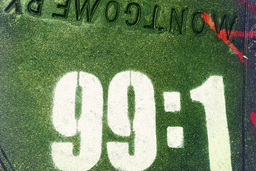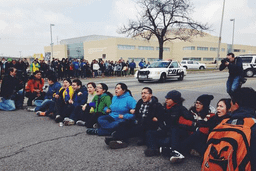As reported by The ITT List, the Revolutionary Armed Forces of Colombia (FARC) is ready for upcoming peace talks with the Colombia government, creating the possibilty of ending a conflict that has raged on for nearly half a century. And the Marxist-Leninist guerrilla group is already celebrating its participation in talks--with a homespun rap video.
Posted on the FARC website before going viral via video-sharing sites and mainstream outlets, the clip shows what appear to be FARC rebel fighters sporting Che Guevara shirts and rapping FARC’s perspective on the conflict’s history and the rebels’ readiness for peace. The “Video for Peace” repeats “I’m going to Havana” in reference to where the peace talks will supposedly end once the first round wraps in Oslo, Norway.
Within hours of the video’s release, Twitter was ablaze with feedback from both sides of the negotiation table, prompting one blogger to call the move “creative diplomacy” and note it forces the world to see rebel fighters as everyday people. The video, combined with its coverage by media giants like CNN and BBC, has received tens of thousands of hits on YouTube.
Rebel leader Rodrigo Londoño, known by the nom de guerre Timochenko, began the video insisting the guerrillas will enter negotiations without resentment or “arrogance.” Londoño’s initial promise is not evidenced further in the video, which spans almost five minutes, as the tune goes on to present FARC’s role in the conflict in what some argue is a misleading manner. A lyric claims FARC have only been “accused” of drug trafficking. On more solid ground is another lyric that shames the United States for its extensive support of the country’s armed conflict. The US funneled billions of dollars into the controversial Plan Colombia as part of the war on drugs.
FARC steer clear of the hardline rhetoric typical of official communications, instead choosing to poke fun at the government. The lyrics mock the administration of Colombian President Juan Manuel Santos for supposedly reaching out to Cuba’s Fidel Castro for assistance in dealing with FARC. Santos is called “Chucky” Santos, paying homage to a popular Colombian meme. The president and the doll of horror movie fame allegedly bear a resemblance to one another. According to security analyst Alfredo Rangel, the rap and its more moderate lyrics may be an endeavor to put a “modern” face on FARC, thus making the rebels seem relatable.
Some argue Santos has not responded to the video as he hopes to be the president to broker a peace treaty rather than exacerbate the conflict. Santos was long famous for following former President Álvaro Uribe’s policies in dealings with rebel forces.
Mainstream media outlets are hailing the video’s final frames–young, plainclothes rebels walking away from the camera–as a sign FARC is ready to re-enter civil society. According to the BBC, the Colombian press is calling the piece a political manifesto, raising the question of whether the song will change the FARC’s image as they head to the peace talks. Colin Williamson, who studies the region at Oxford, is skeptical the video and its imagery will have much impact on negotiations.
“In greenlighting this video, FARC wanted to show a more humane face at a time when vast swathes of Colombians are skeptical of their intentions and promises to end conflict,” Williamson told The ITT List via email. Rather, he contends, the video signifies a shift “away from bellicose symbolism [toward] peaceful narration [and] memorializing.”
Though BBC Mundo correspondent Liliet Heredero said the song is “very catchy” on Tuesday, Williamson disagrees, calling it “beyond cheesy,” but noting the video is not bizarre in the context of Colombia.
Members of the National Police in Colombia’s troubled Chocó department appeared on YouTube in mid-August with their “National Police Rap.” The song claims the National Police are “struggling for peace” and “freedom in Colombia.” The Chocó shares a border with Panamá, making it a hotbed of rebel activity and coca cultivation as the gateway to Central and North America. FARC itself has released and been featured in other songs of the more conventionally Colombian vallenato and merengue styles.
Peace talks between the Santos government, FARC and National Liberation Army guerrillas are set to begin in Oslo next month. Both groups are considered terrorist organizations by the U.S. Department of State.
Nyki Duda is a freelance editor and writer. She currently researches misinformation at Lead Stories. Her work has appeared in Dissent, The Progressive and more. Nyki is a former broadcast script editor and has a master’s degree in anthropology.




